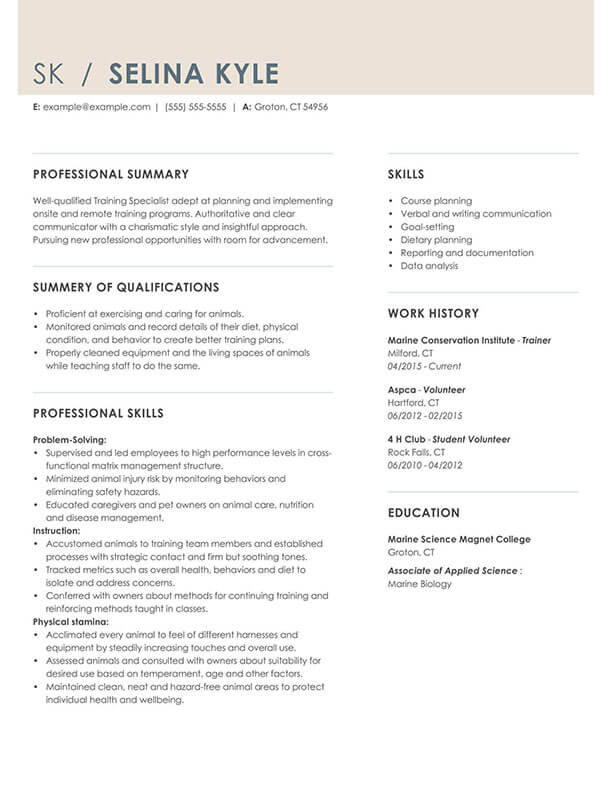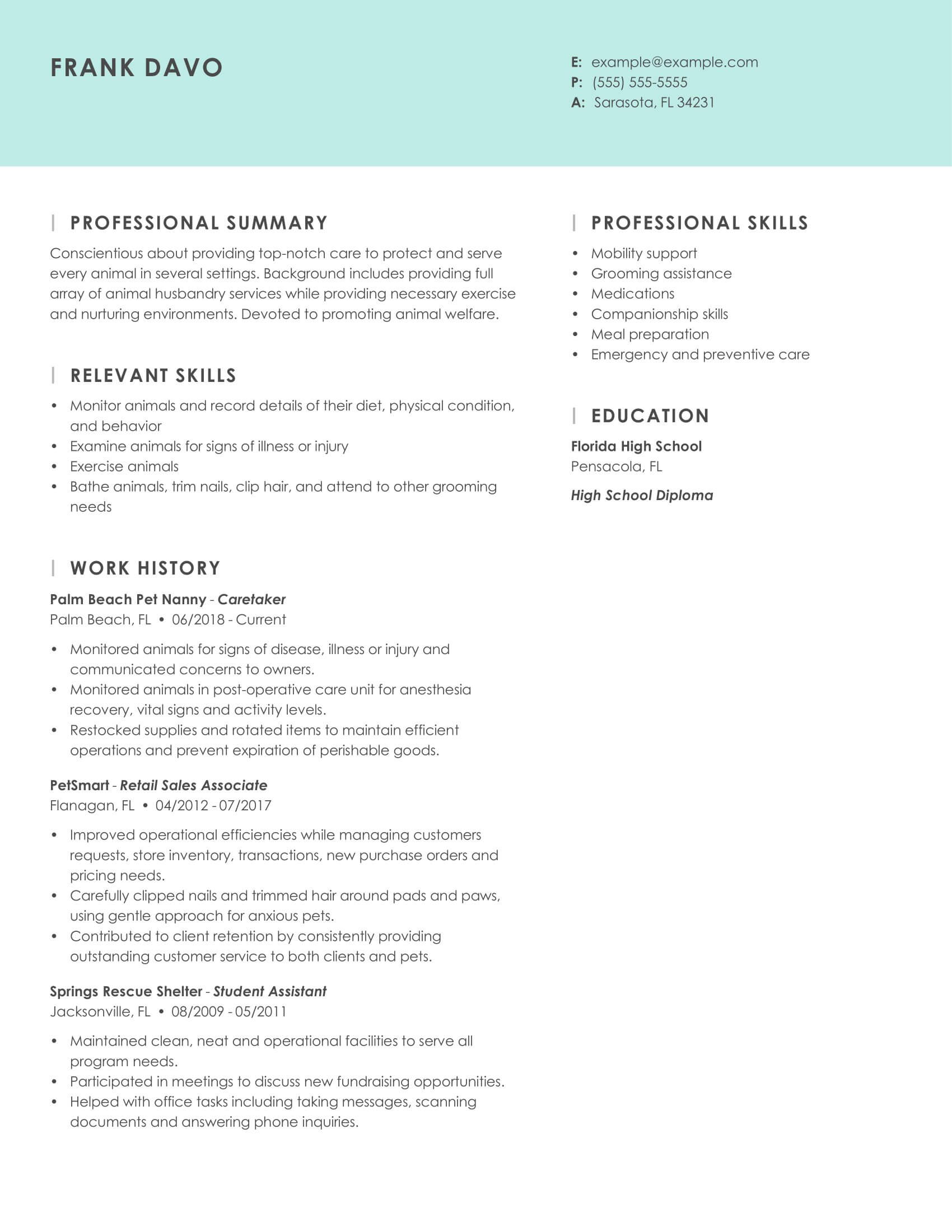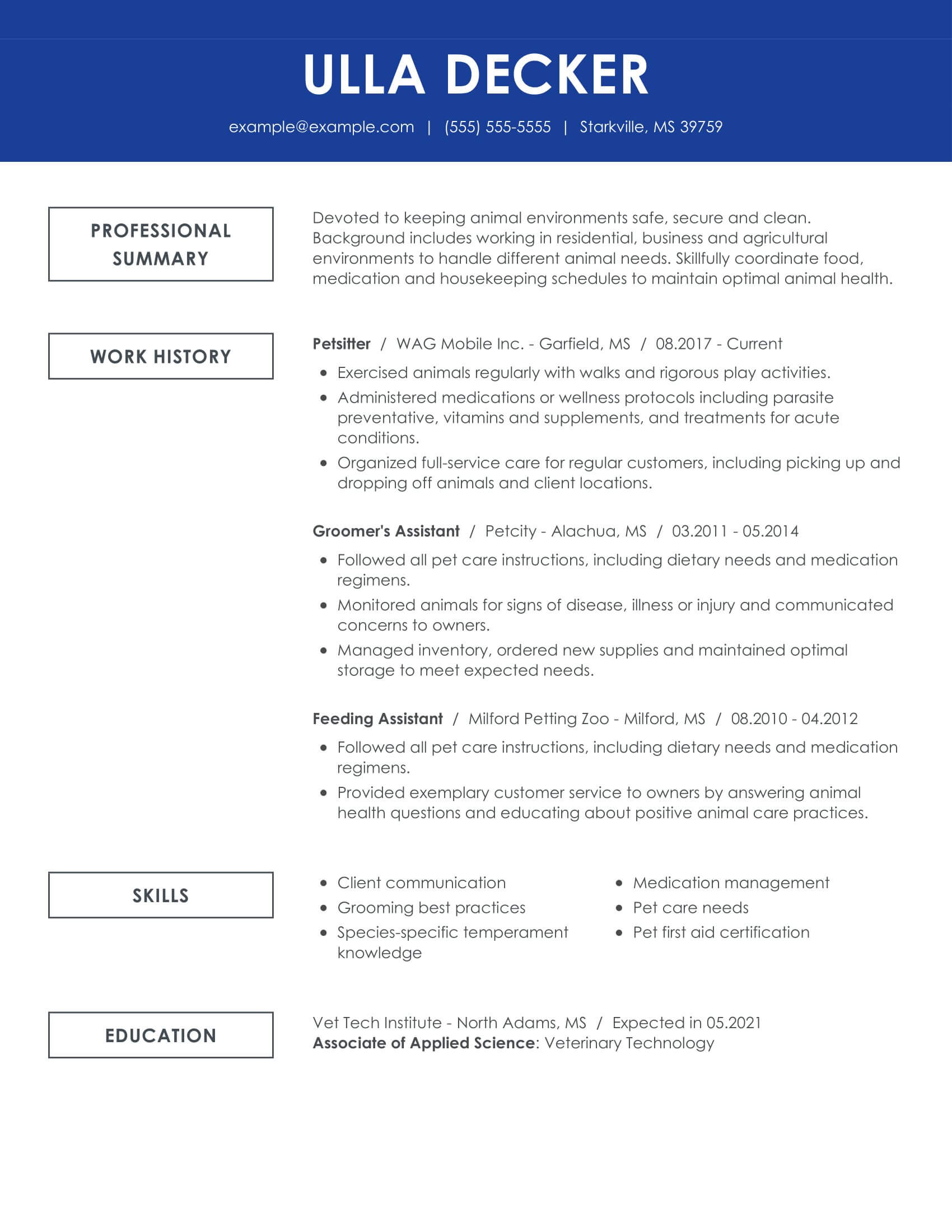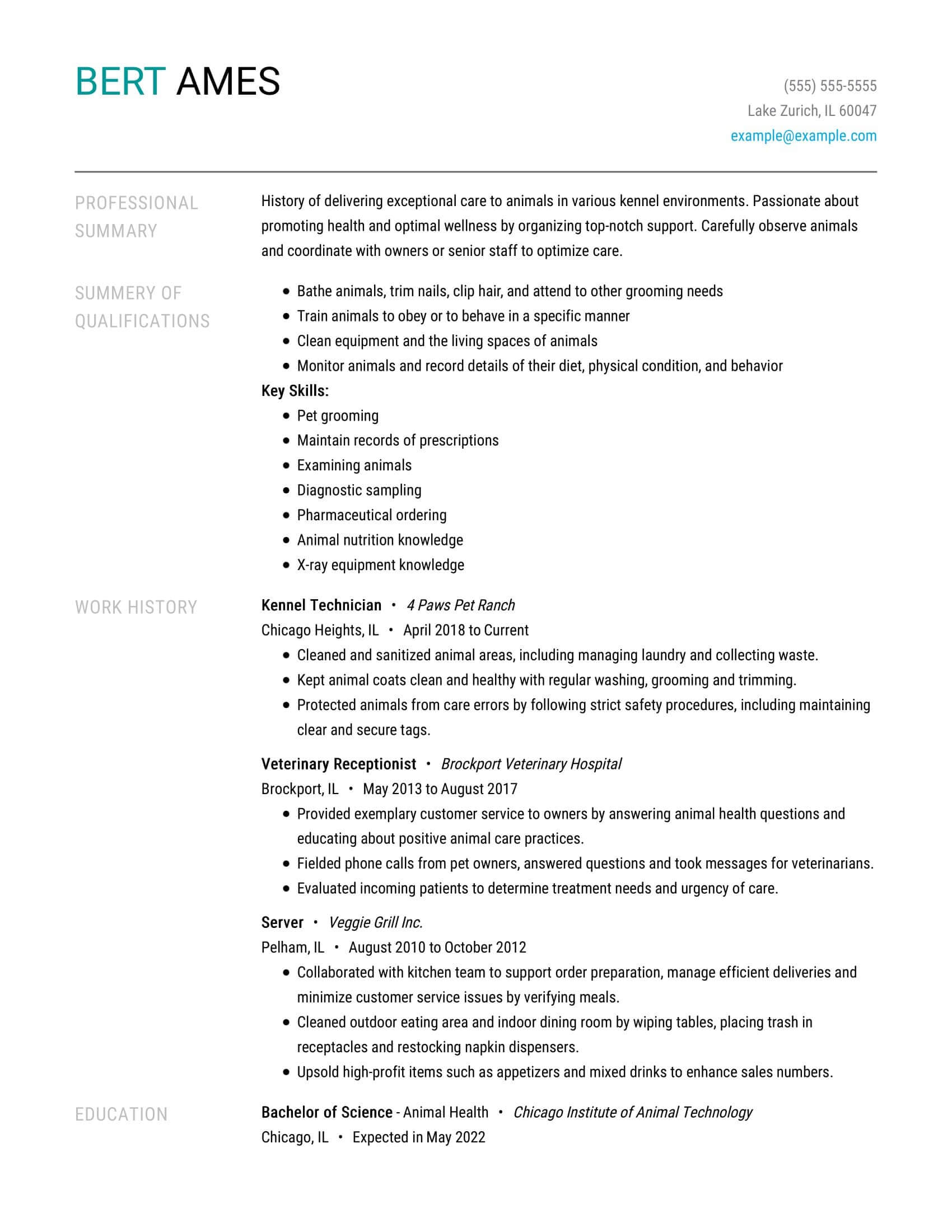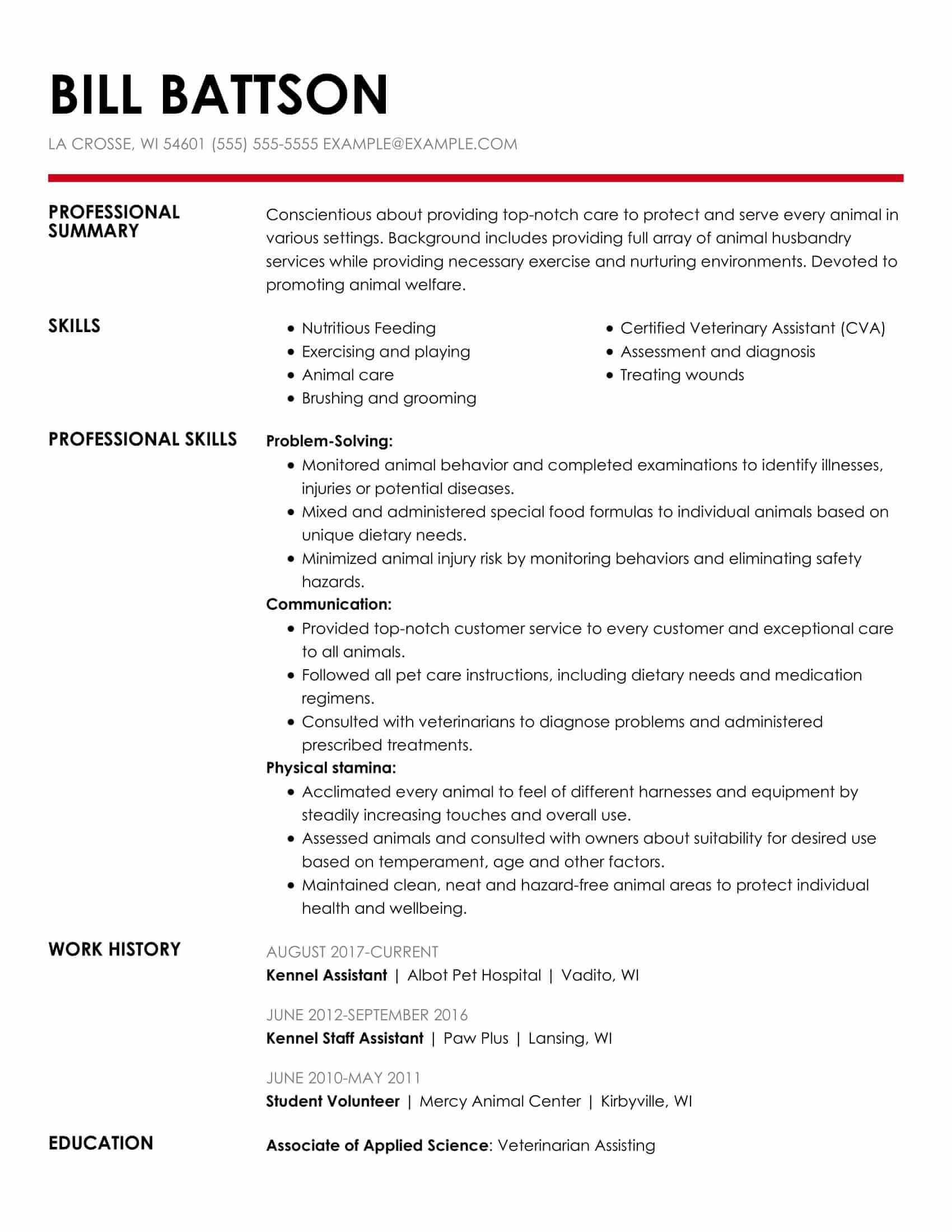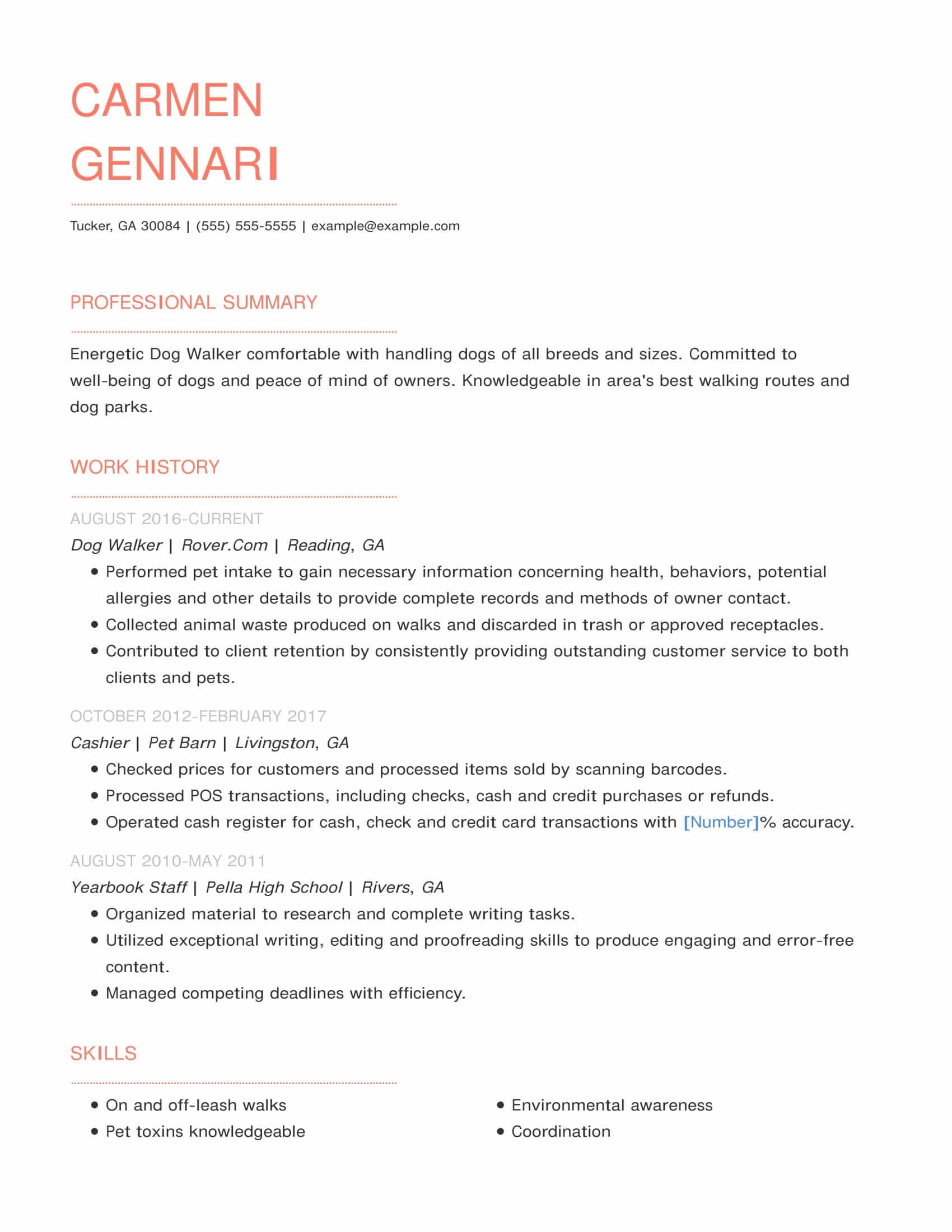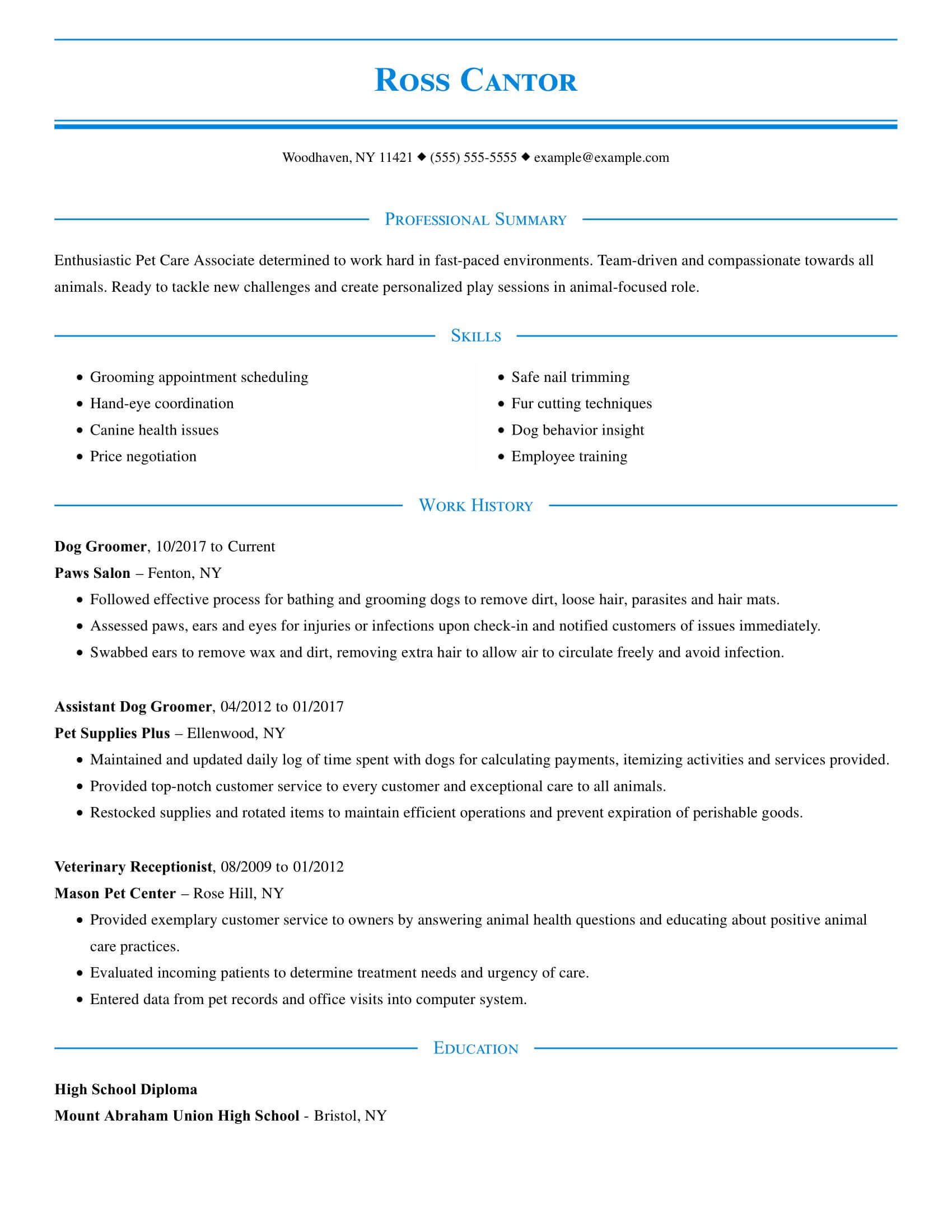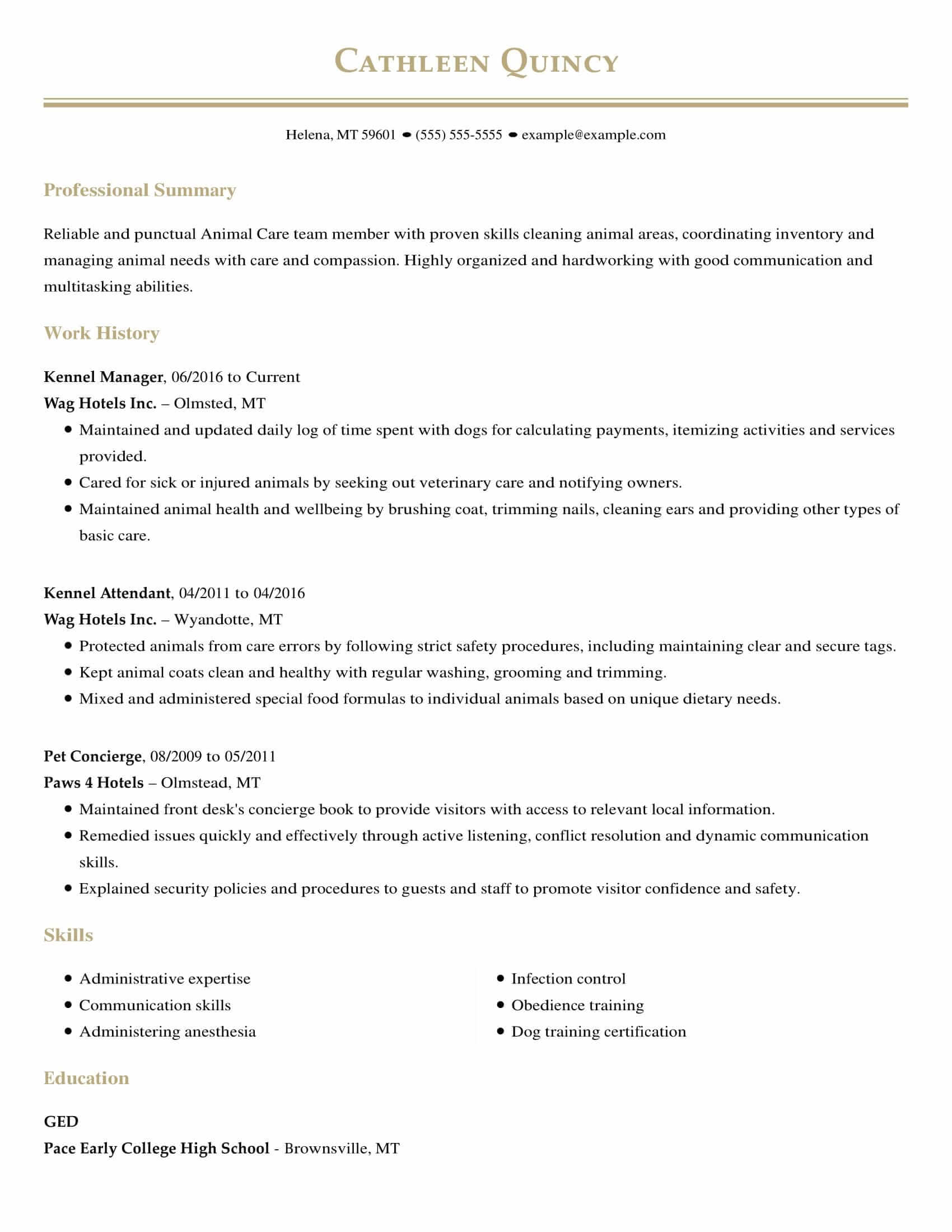Dog Walker
This job seeker, seeking an entry-level dog walking position, doesn’t have much professional experience in the field. Because of this, she uses a functional resume format, which highlights skills over work history. She also includes two past positions outside of the animal care industry that provided her with transferable skills, like communication and customer service, both of which would be desirable to hiring managers. She uses her professional summary to concisely emphasize her passion, personality and qualifications.
Build My Resume
